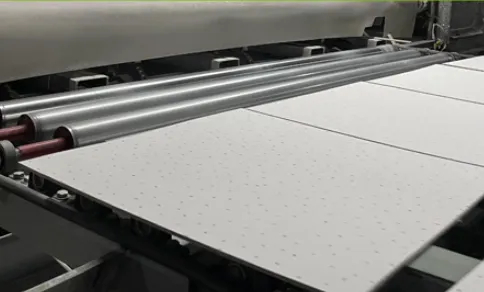Dec . 12, 2024 10:19 Back to list
acoustical ceiling grid
Understanding Acoustical Ceiling Grids A Comprehensive Overview
Acoustical ceiling grids play a vital role in modern interior design and construction, especially in spaces where sound quality and aesthetic appeal are paramount. These grids are designed to support acoustical ceiling tiles, which are specifically engineered to absorb sound and improve the acoustics of a space. This article delves into the significance, components, installation, and maintenance of acoustical ceiling grids.
What Are Acoustical Ceiling Grids?
Acoustical ceiling grids are framework systems that hold lightweight materials such as acoustical tiles or panels. Typically made from metal, these grids are suspended from the structural ceiling above, creating a space between the two. This gap allows for the installation of acoustic insulation and provides access to the systems above the ceiling, such as wiring, HVAC ducts, and plumbing.
Importance of Acoustical Ceiling Grids
In various settings, including offices, schools, hospitals, and auditoriums, sound management is crucial. Uncontrolled sound can lead to reduced speech intelligibility, increased noise levels, and overall discomfort in the environment. Acoustical ceiling grids, paired with the right tiles, help mitigate these issues by absorbing excess sound and minimizing echo and reverberation. This not only enhances the auditory experience but also contributes to a more productive work or learning atmosphere.
Components of Acoustical Ceiling Grids
Typically, an acoustical ceiling grid system includes the following components
acoustical ceiling grid

1. Main Tees The primary horizontal supports that run the length of the room. 2. Cross Tees The smaller, perpendicular supports that connect to the main tees, creating a grid pattern. 3. Wall Angles These are L-shaped metal sections that run along the perimeter of the ceiling, providing additional support to the grid and serving as a termination point for the acoustical tiles. 4. Suspension System This includes wires or rods that attach the grid to the overhead structure, ensuring stability.
Installation Process
Installing an acoustical ceiling grid requires precision and careful planning. Here are the general steps involved
1. Planning The installation begins with designing the layout. It’s essential to take measurements and determine where major lights, vents, and other fixtures will be placed. 2. Marking Using chalk lines, the installer marks the desired height and layout of the grid on the walls. 3. Attaching Wall Angles Wall angles are secured to the walls with screws or anchors, providing a ledge for the grid. 4. Hanging the Grid The main tees are suspended from the overhead structure using adjustable hangers. Cross tees are then inserted into the main tees to form a robust grid. 5. Installing Acoustical Tiles Finally, the acoustical tiles are placed into the grid. Properly fitting tiles will not only enhance aesthetics but also ensure optimal acoustic performance.
Maintenance of Acoustical Ceiling Grids
Maintaining acoustical ceiling grids is relatively straightforward. Regular inspections are essential to ensure that the grid remains secure and that the tiles are in good condition. Dust and dirt can accumulate on the tiles over time, so periodic cleaning is necessary. For heavily stained or damaged tiles, replacement may be required.
Conclusion
Acoustical ceiling grids are much more than just a way to hide electrical wiring and plumbing; they are an essential component in creating a harmonious indoor acoustic environment. Whether in a corporate office aiming for concentration or a school needing clarity in communication, these grids significantly impact sound quality and overall comfort. With careful installation and maintenance, acoustical ceiling grids can provide enduring benefits for various spaces, making them a valuable addition to many buildings.
-
Durable Ceiling T Grid Systems | Easy InstallationNewsAug.29,2025
-
PVC Gypsum Ceiling: Durable, Laminated Tiles for Modern SpacesNewsAug.28,2025
-
Pvc Gypsum Ceiling Is DurableNewsAug.21,2025
-
Mineral Fiber Board Is DurableNewsAug.21,2025
-
Ceiling Tile Clip Reusable DesignNewsAug.21,2025
-
Ceiling T Grid Modular DesignNewsAug.21,2025







